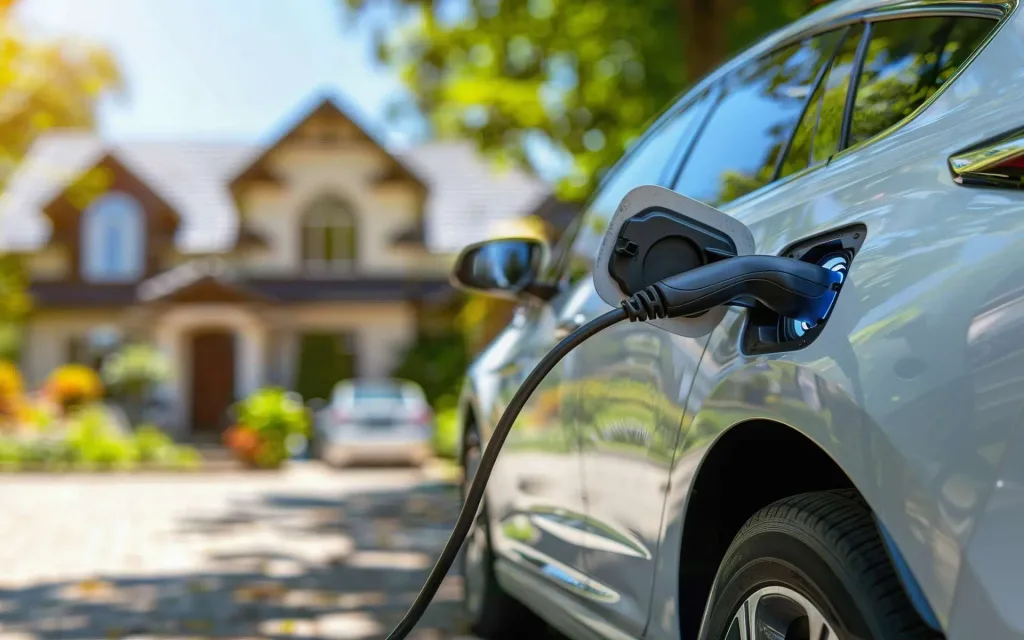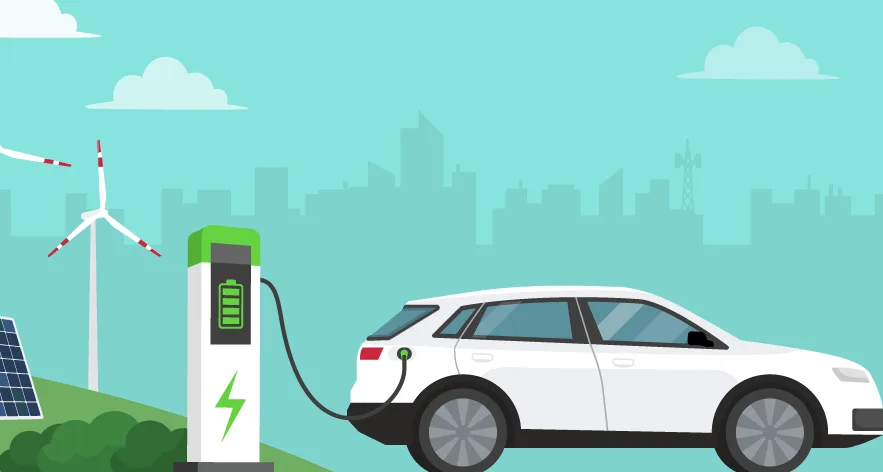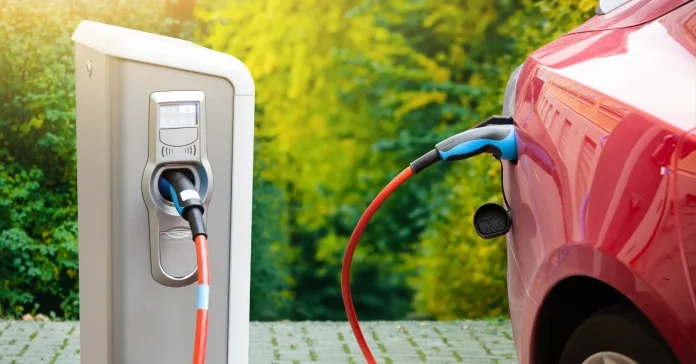The Indian government has unveiled an ambitious plan that could forever change how we travel across the country. In a significant push toward sustainable transportation, the Ministry of Heavy Industries (MHI) has announced a massive ₹2,000 crore fund to expand EV charging stations India desperately needs to support its growing electric vehicle fleet.
This isn’t just another government announcement that might fade away. It’s a concrete plan to more than double the number of public charging stations from the current 32,500 to an impressive 72,300 by the end of 2025-26. For anyone who has considered buying an electric vehicle but worried about where to charge it, this news changes everything.
“The expansion of EV infrastructure across strategic locations will accelerate electric mobility adoption in India,” said a senior official from the Ministry of Heavy Industries who requested anonymity because they weren’t authorized to speak publicly about the details.
The Strategic Vision Behind India’s EV Charging Network
What makes this initiative truly remarkable is its comprehensive approach. For the first time, the government is looking beyond conventional locations to install charging infrastructure at:
- Airports: Imagine arriving at the airport, parking your EV, and returning from your trip to a fully charged vehicle
- National Highways: Long-distance travel in EVs will become practical with strategically placed EV charging stations
- Ports: A first-of-its-kind addition that recognizes the importance of integrating all transportation hubs
The number of EV charging stations India currently has will more than double by 2026, addressing one of the biggest hurdles to EV adoption – range anxiety. This fear of running out of charge before reaching a charging station has kept many potential buyers from making the switch to electric.
Ravi Kumar, a Delhi-based IT professional who recently purchased an electric car, shares his experience: “I love my EV, but planning long trips is still stressful. I have to carefully map charging stations and sometimes take detours. This expansion would be a game-changer for people like me.”

How EV in India Will Benefit From This Initiative
The growth of EV in India has been hampered by insufficient charging infrastructure. Despite government incentives and growing environmental awareness, many consumers remain hesitant to purchase electric vehicles due to practical concerns about charging.
This initiative directly addresses those concerns through:
- Strategic Placement: EV Charging stations at key transportation hubs
- Increased Density: More options within urban areas
- Nationwide Coverage: Expansion across multiple states and regions
“This government initiative for EV charging infrastructure in India represents the largest investment to date,” explains Dr. Anand Sharma, an energy policy expert at the Indian Institute of Technology, Delhi. “It signals a serious commitment to making electric mobility viable for the average Indian.”
The ₹2,000 crore fund will significantly enhance India’s EV infrastructure over the next two years, potentially transforming the market landscape.
A Collaborative Approach to Implementation
What sets this initiative apart is its collaborative nature. The Ministry of Heavy Industries isn’t working alone but has formed partnerships with:
- Ministry of Ports, Shipping and Waterways
- Airport Authority of India (AAI)
- National Highways Authority of India (NHAI)
- Multiple state governments
This multi-agency collaboration ensures that the expansion will be coordinated and strategic, maximizing the impact of every rupee spent.
“The collaborative approach makes this government initiative for EV charging infrastructure in India unique,” notes Priya Menon, Director of the Electric Mobility Association of India. “By bringing together various stakeholders, the government is ensuring that charging stations will be placed where they’re most needed.”
Current State of EV in India and Future Projections
The India EV market is expected to grow significantly following this infrastructure expansion. Industry analysts project that improved charging access could trigger double-digit growth in EV sales across segments, from two-wheelers to commercial vehicles.
Here’s a look at the current and projected EV charging infrastructure:
| Year | Number of Public EV Charging Stations | Percentage Increase |
|---|---|---|
| 2025 | 32,500 | Baseline |
| 2026 | 72,300 (Projected) | 122% |
“Analysts predict the India EV market could see double-digit growth with improved charging access,” says Vikram Choudhary, automotive industry analyst at EVInsights. “This infrastructure development could be the tipping point for mass EV adoption in India.”

The Economic and Environmental Impact
The benefits of EV charging stations in India extend far beyond convenience for vehicle owners. This initiative promises to deliver substantial economic and environmental dividends:
Economic Benefits:
- Job Creation: Installation, maintenance, and operation of charging stations will generate thousands of direct and indirect jobs
- New Business Opportunities: From charging station operators to service providers
- Reduced Fuel Imports: Decreasing India’s dependence on imported oil
- Technology Development: Spurring innovation in charging and grid management technologies
Environmental Benefits:
- Reduced Carbon Emissions: As more vehicles switch from fossil fuels to electricity
- Improved Air Quality: Particularly in urban areas with high pollution levels
- Support for Renewable Energy: Creating demand that can be met through clean energy sources
“The economic and environmental benefits of EV charging stations in India will be substantial,” emphasizes Sunita Narain, environmental activist and Director General of the Centre for Science and Environment. “This is a critical step toward addressing our air quality crisis and meeting climate commitments.”
The Road Ahead: Implementation Timeline
The Ministry of Heavy Industries has outlined a phased approach to implementing this ambitious plan:
- Phase 1 (2024-25): Initial expansion focusing on metropolitan areas and key highways
- Phase 2 (2025-26): Extension to tier-2 cities, airports, and ports
- Phase 3 (Beyond 2026): Comprehensive nationwide coverage
This methodical approach ensures that the most critical areas receive infrastructure first, while allowing for adjustments based on usage patterns and technological developments.
Also Read: Maruti Suzuki’s e-Vitara Launch: A New Chapter in Indian EV
FAQs About EV Charging Infrastructure in India
How will this initiative affect EV prices in India?
While the initiative doesn’t directly impact vehicle prices, the expanded charging infrastructure reduces the total cost of EV ownership by addressing range anxiety and potentially lowering charging costs through increased competition.
Will these charging stations support all EV models?
The government plans to implement charging stations with multiple connector types to accommodate various EV models in the Indian market. This includes support for both domestic and international standards.
How long will it take to charge an EV at these stations?
Charging times will vary based on the type of charger and vehicle. Fast chargers can provide an 80% charge in 30-45 minutes, while standard chargers might take 3-8 hours for a full charge.
Will charging stations be available in rural areas?
The initial focus is on urban centers, highways, and transportation hubs. However, the long-term plan includes expanding to semi-urban and eventually rural areas, especially along major connecting roads.
How will the electricity grid handle the increased demand?
The initiative includes coordination with power distribution companies to upgrade grid infrastructure where needed. Additionally, many charging stations will incorporate smart charging technology to manage load and potentially integrate renewable energy sources.
How can I find EV charging stations near me?
Several mobile applications already provide real-time information about charging station locations. As the network expands, these platforms will be updated to include new stations. The government is also considering a centralized platform to provide this information.
Conclusion: A Turning Point for Electric Mobility in India
The ₹2,000 crore investment in expanding EV charging stations India represents a turning point in the country’s transportation landscape. By addressing the critical infrastructure gap, this initiative removes one of the biggest barriers to EV adoption.
For potential EV buyers, the message is clear: the government is serious about building the infrastructure needed to make electric vehicles a practical choice for everyday transportation. For the industry, it signals a future where electric mobility is not just an alternative but the mainstream option.
As Niti Aayog CEO Amitabh Kant recently noted, “Electric mobility is the future of transportation, not just globally but especially for India. This charging infrastructure initiative is a critical enabler of that future.”
The road to electric mobility in India has been long and challenging, but with this bold infrastructure push, the journey just got a lot smoother.


